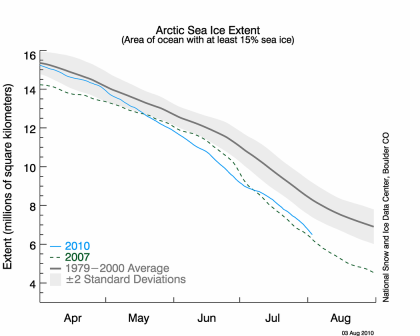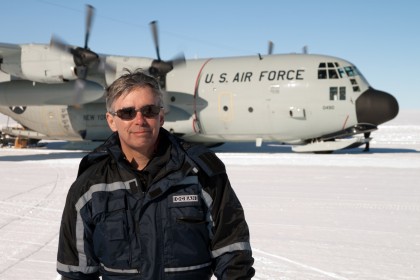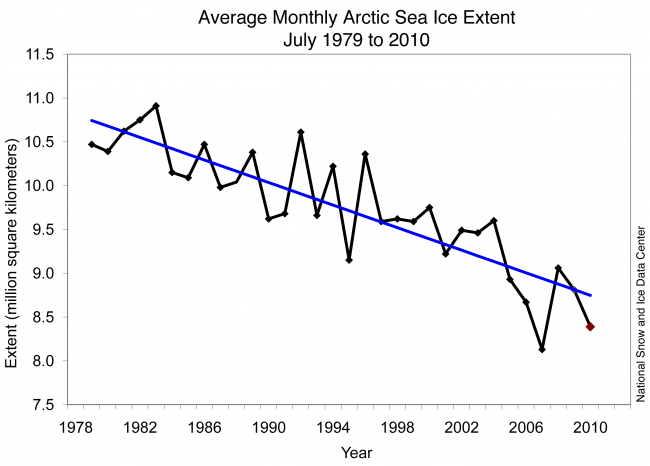4 August 2010
Arctic Ocean Ice cover drops to 2nd lowest July level on Record.
Posted by Dan Satterfield
The Arctic sea ice level dropped to the second lowest July levels on record last month. The data record goes back to about 1978. That’s when reliable satellite based measurements began. The lowest amount on record was on 16 September in 2007.

Arctic sea ice extent compared the the long term average and the record low year of 2007. Click for larger image.
Will we set an all time low record this year. Scientists at the National Snow and Ice Data Center in Colorado are thinking that we likely will not. It will be very close though. Record low or not, the levels will be well below the average ice levels of 1979-2000.
The bigger part of this story that is sometimes missed is the thinning of the ice. Submarine records from the past and modern methods all indicate the ice is getting much thinner. The Arctic of Cook and Perry does not exist anymore. It is quite possible that large areas of the Arctic may be ice free before 2050 in summer. Scientists are still trying to figure out just what that will mean for the hemisphere and the planet as a whole.
Make no mistake, the Arctic is the Northern Hemisphere’s air conditioner. If the ice starts disappearing in the summer, it will have a significant impact on our climate. These are the kind of questions that scientists hope the ice core drill sites like NEEM will answer.

That's me at NEEM on July 28,2010. The ski equipped C-130 from the New York Air Guard carried science types and ice cores back to the real world.
The NEEM site brought up ice from the warm period before the last ice age. This period is called the Eemian and it was a bit warmer than this warm period that has lasted about 10,000 years now. How much ice was there in Greenland in the Eemian, and how did it affect global temperatures is a question the NEEM ice core may answer.
It will be possible to estimate ocean temperatures as well as greenhouse gas levels with the ice core. Even the amount of volcanic dust in the atmosphere can be measured. It’s really amazing how the past can be such a spotlight on the future climate change we are forcing on ourselves.
More on NEEM with pics and videos soon.



 Dan Satterfield has worked as an on air meteorologist for 32 years in Oklahoma, Florida and Alabama. Forecasting weather is Dan's job, but all of Earth Science is his passion. This journal is where Dan writes about things he has too little time for on air. Dan blogs about peer-reviewed Earth science for Junior High level audiences and up.
Dan Satterfield has worked as an on air meteorologist for 32 years in Oklahoma, Florida and Alabama. Forecasting weather is Dan's job, but all of Earth Science is his passion. This journal is where Dan writes about things he has too little time for on air. Dan blogs about peer-reviewed Earth science for Junior High level audiences and up.